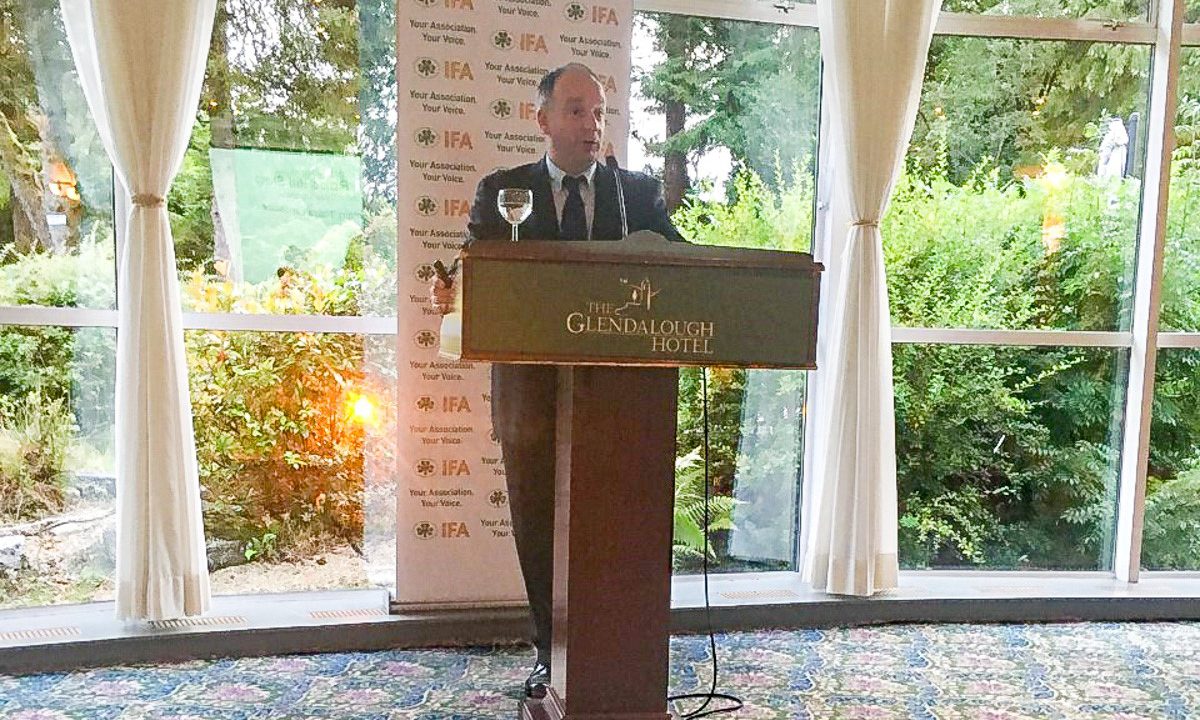“New environmental schemes need to be implemented to reward farmers that will manage their sheep on the hills,” according to Michael Gottstein.
Michael, who is the head of the Sheep Knowledge Transfer Programme for Teagasc, was speaking at the Irish Farmers’ Association (IFA) National Hill Sheep Forum in the Glendalough Hotel, Co. Wicklow, on Thursday, September 5.
There are many challenges facing hill sheep farmers across the country. They are delivering a wholesome product that is practically being produced organically.
Michael went on to talk about the challenges and opportunities hill farmers face and what needs to be done to improve the efficiency and profitability of this enterprise.
Challenges
One of the major challenges that hill farmers face, which lowland sheep farmers have a distinct advantage over, is increased output.
“Hill flocks generally have a reduced litter size and lower live weights. This is due to many factors such as: the quality of forage offered; environmental challenges; and breed type.
“Mortality rates are higher in hill flocks due to farmers not herding their sheep every day and the challenging environment which faces these animals.
Farming on the hills is very labour intensive and more and more hill farmers are choosing to keep their flocks on lowland ground instead of managing them up on the hills.
“This is leading to sheep only grazing the hills in July and August, leading to growth of unfavorable species such as bracken and furs that sheep won’t graze. This results in the hill areas becoming unavailable to graze,” he added.
Farmers that are keeping their flocks on the lowland ground are increasing their profits.
Opportunities
Michael explained that more hill breeds need to be incorporated back into the hill flock, to increase productivity and hardiness. The Texel or Suffolk won’t thrive as well as the Blackface Mountain breed on the hills.
Another challenge, yet a good opportunity for hill farmers, is to develop a flock book.
We need to set up performance recording on hill sheep farms, to find out which strains of sheep are superior so we can improve the animals that are on the hills.
“We need a European Innovation Partnerships Initiative (EIP) scheme to pay farmers that are interested in improving the performance of sheep as it will take a long time to get up and running.
“Early lamb producers have fallen off big time and this is an area hill farmers could exploit in the future.
“There are also multiple market opportunities for light lamb production. In Connemara, there are farmers producing lambs between 12kg and 15kg dead-weight,” Michael added.
Focus
“We want to reduce the number of empty ewes. There is huge wastage feeding empty ewes and the veterinary expenses they incur.”
“Batching lambs to maximise returns; for example, finishing the top 20% of lambs early. Furthermore, lambs that are between 33kg and 40kg liveweight can be sold as forward stores. This year, good prices were achieved for this type of stock.
“Moreover, keeping light lambs on grass and selling them after Christmas will maximise returns. There is huge scope to increase margins through nutrition and flock health.
Future environmental schemes need to recognise the opportunity and cost of farming on the hills, through the loss of performance and extra labour.
“The benefits of this include improving the environmental impact of the landscape, but farmers need to be rewarded,” Michael concluded.
